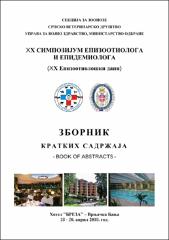| dc.description.abstract | African swine fever (ASF) is a viral, contagious disease of domestic pigs and wild boars all breeds and ages, all members of Suidae. The causative agent is DNA virus, genus Asfivirus, a member of family Asfarviridae. In Africa, Ornithodoros ticks are involved in disease transmission. African swine fever is enzootically present in sub-Saharan Africa, where virus for decade back circulates in the wild and domestic pig population. On the European continent, taking into account the past few decades, the presence of the disease has been confirmed in the Iberian Peninsula and Sardinia. Eradication of AKS in Europe was done in the late 1990s and until 2007, the disease was not detected. In the following year, the disease was diagnosed in Georgia from which ASF spread to the Russian Federation, and the surrounding states (Armenia, Azerbaijan, Ukraine and Belarus). In 2014, the disease has been reported in Lithuania, Latvia, Estonia and Poland, 2016 in Moldova. In mid-2017, the disease was diagnosed in the Czech Republic and in Republic of Romania. Having in mind that the disease was for the first time diagnosed in the domestic swine population of the neighbourhood country, the Veterinary Directorate ordered the implementation a set of control, preventive measures to be applied in the country but also at border crossings for passengers, vehicles, ships in the river ports and at the airports. The special Expert Group, National Centre and Decision-making Team for Movement Tracking, Prevention and Control AKS were established. The Veterinarian Manual about ASF was written in order to provide the latest disease information. At the country borders, in order to inform all passengers, the informative posters written in several languages were set. In order to increase awareness, the series of lectures for all involved subjects (veterinarians, breeders, hunters) was organized in all country districts. The aim of the paper is to review the epizootiological situation in Europe and to analyse the applied measures in Republic of Serbia in order to try to prevent further spread of the disease. | en_US |

